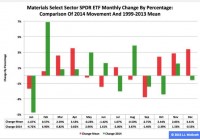Diversify With A Cheap, Broad Munis Bond ETF
Investors may be exposed to markups when buying individual muni debt securities. Diversify with a broad municipal bond ETF instead. A look at muni bond ETF options, including short-duration plays. Fixed-income investors may be paying more than necessary when purchasing individual municipal debt securities. On the other hand, people can use munis exchange traded funds for a cheap way to access the market. Three U.S. regulators have began scrutinizing municipal bond markup fees that could cut into investor returns, reports Aaron Kuriloff for the Wall Street Journal . The markup shows the difference between a muni debt security’s current offering price among dealers and the higher price a dealer charges a customer. The markup typically occurs when a dealer acts as a principal who buys and sells from a personal account as opposed to brokers who facilitate trades for a nominal fee. As an alternative, Allan Roth, founder of Wealth Logic, believes that investors should use low-fee bond funds instead, arguing that markups the funds pay are smaller since ETF providers purchase in bulk and are more acquainted with the market. Additionally, Roth points out that muni funds can instantly help investors diversify through one single investment since the bond funds hold hundreds if not thousands of individual debt securities. For instance, the iShares National AMT-Free Muni Bond ETF (NYSEArca: MUB ) has a 0.25% expense ratio and includes 2,470 component holdings. The SPDR Nuveen Barclays Municipal Bond ETF (NYSEArca: TFI ) has a 0.23% expense ratio and 535 holdings. The Market Vectors Intermediate Municipal Index ETF (NYSEArca: ITM ) has a 0.24% expense ratio and 985 components. “Even if I have $5 million to buy municipal bonds, I really can’t diversify enough by buying individual bonds,” Roth said in the article. “And if I have $500,000, then I really can’t diversify.” Moreover, while purchasing individual bonds from one’s home state provides additional tax breaks, an investor may be overexposed to their state, especially the bond is based off the economy that supports his or her job and home, Roth added. With muni ETFs, investors can also spread out risk with various state exposure. The three muni ETFs are market-cap weighted, so the states with the largest outstanding debt have the biggest weights, which include California, New York and Texas, respectively. Additionally, some analysts and advisors suggest sticking to short- or intermediate-term funds since long-term bond funds are more susceptible to interest rate risks. MUB has a 6.34 year duration, ITM has a 6.92 year duration and TFI has a 7.14 year duration. There are also a number of short-term municipal bond ETFs available, including the SPDR Nuveen Barclays Short Term Municipal Bond ETF (NYSEArca: SHM ) , which has a 2.89 year duration, Market Vectors-Short Municipal ETF (NYSEArca: SMB ) , which has a 3.1 year duration, and iShares Short Term National AMT-Free Muni Bond ETF (NYSEArca: SUB ) , which has a 2.06 year duration. The Vanguard Group is also planning its first foray into the muni bond ETF space with the Vanguard Tax-Exempt Bond Index Fund, which will track the S&P National AMT-Free Municipal Bond Index. Max Chen contributed to this article .
